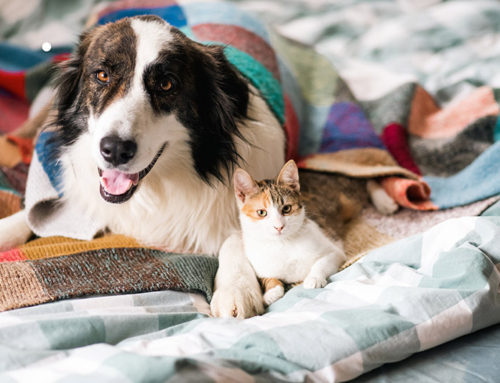PETS WILL EAT ANYTHING
Pica
Our pets will eat many bizarre things. In fact, there is a condition in dogs and cats (and children) called pica, in which they ingest inappropriate non-nutritive objects. This can include fabric, sticks, stones, dirt, mulch, jewelry, plastic toys, eyeglasses, and hats. I personally have removed stones, scissors, shoulder pads, dinosaur-print panties, diamonds, and a Mickey Mouse hat from pets with this condition.
While it’s normal for puppies and kittens to orally explore their environment, it’s abnormal for them to consume foreign, inappropriate objects. Pica can occur in young or adult animals and can cause serious medical complications such as severe oral burns from chewing on electrical cords (not to mention electrocution), poisoning from ingesting noxious substances, and even perforated or obstructed stomachs and intestines, which requires emergency abdominal surgery to repair tissue and remove the offending foreign object. Sometimes an underlying disease will cause this behavior, but most of the time the cause of pica is unknown. Recent theories suggest it is a form of obsessive-compulsive disorder or that it may be caused by boredom. In any case, if you suspect your pet has pica, it’s best to consult with your veterinarian immediately.
Coprophagy is a specific form of pica where pets eat stool—either their own or that of another animal. This behavior, while not necessarily dangerous to the animal, is unacceptable and can lead to parasites and other intestinal upset. Coprophagy is common in dogs but rare in cats. Again, the exact cause of this condition is not known, although some experts feel it is seen more often in dogs that tend to be highly food-motivated, or that it might be carried over from normal parental behavior of ingesting the waste of young offspring, or that it’s a natural evolutionary behavior used by wild dogs to sustain themselves during times when food was unavailable. Dogs may also eat bowel movements from cats living in their household or from farm animals.
Coprophagia may be a behavioral problem or secondary to a medical illness such as hormone/endocrine imbalances, malabsorption disorders, parasites, diabetes, and/or disorders of the thyroid gland. Once your veterinarian has ruled out a medical cause of coprophagy, there are some steps you can take to curb this nasty behavior.
The most effective way is to eliminate access to the offending feces itself. This can be done by immediately picking up after your pet. Another suggestion is to keep your pet on a leash anytime it goes outside.
Behavior modification can also be an effective tool. At the time of defecation, distract your pet with a food reward so it will become conditioned to expect food at defecation instead of looking for feces to eat.
Alternatively, you can treat your pet’s food with a commercial meat tenderizer, MSG, or a product called For-Bid to make feces taste unpleasant.
You can also sprinkle cayenne pepper or a commercial product such as Bitter Apple directly on the stool to create a taste aversion. However, for this method to be effective, every stool your pet has access to must be treated in order for your pet to learn that eating stool results in unpleasant consequences.





